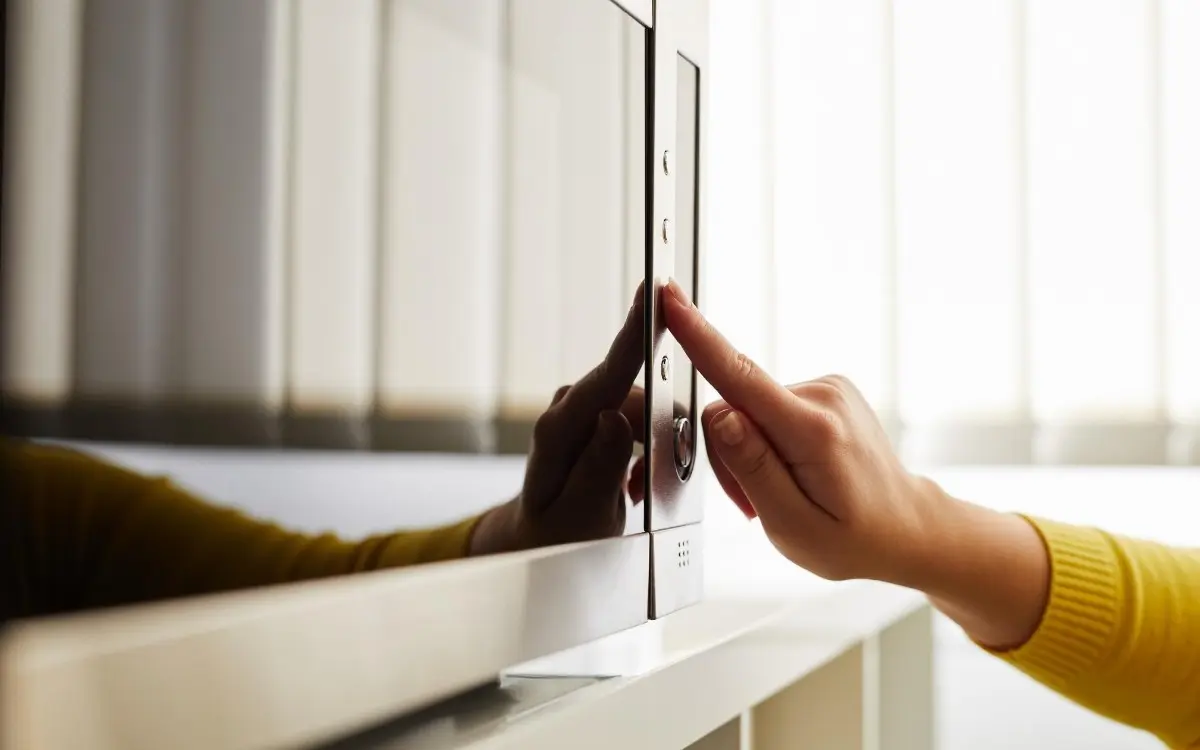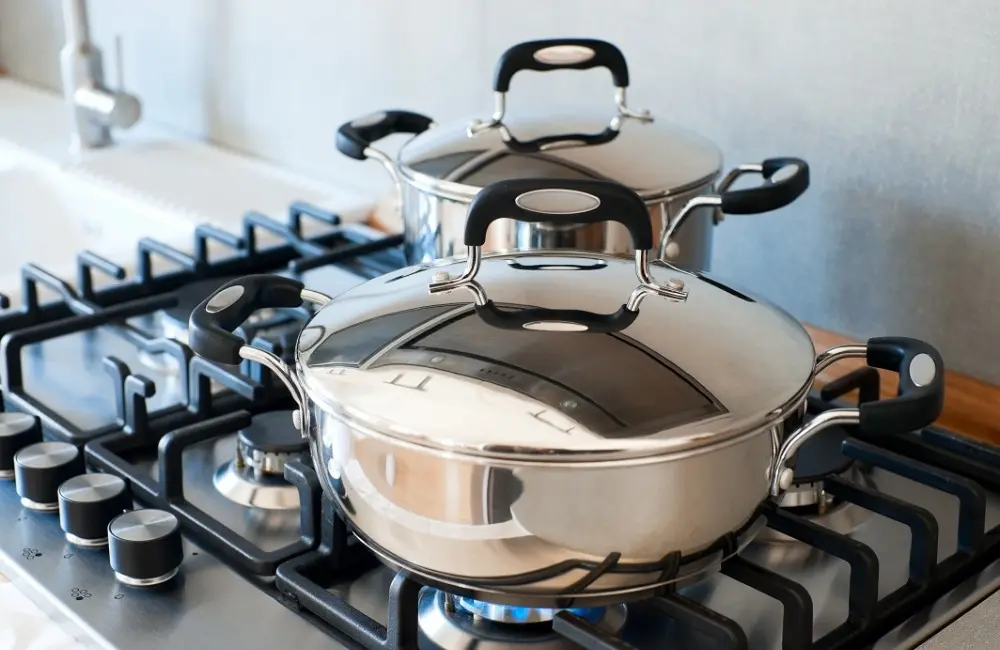Recently, there’s been a movement to ditch your microwave in favor of the supposedly superior toaster oven. The culinary community splits down the middle on this issue — arguing the microwave vs. toaster oven debate ’til they’re blue in the face. Is one really better than the other?
Let’s find out!
Comparison Table: Toaster Oven vs. Microwave
Before we get started, here’s a basic overview of the toaster oven vs. microwave oven:
| Toaster Oven | Microwave |
| • Takes up a lot of counter space • Cooks from the outside in • Brown, toast, crisp, and caramelize • Not suitable for liquids • Long cook time • Uses infrared radiation • Energy-efficient • Makes great bacon | • Usually above oven to save space • Cooks from the inside • Heat, reheat, defrost, and melt • Great for liquids • Shorter cook time • Uses electromagnetic waves • Uses more energy • Makes easy popcorn |
What Is a Toaster Oven?
Whether they have a toaster oven or not, most people don’t actually know how they work. Let’s flashback to fourth-grade science for a minute. Toaster ovens heat food with infrared radiation produced by an electric current running through multiple metal coils. This heats the coils and turns the metal bright red. The heat then wafts to the food and cooks it from the outside-in.
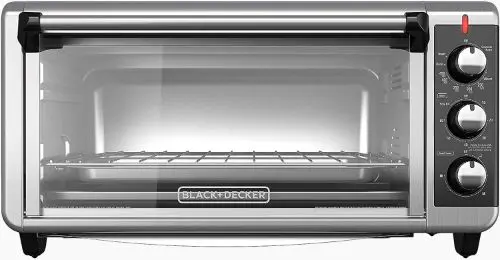
The benefit of this is that the direct heat allows you to do things like brown, caramelize, crisp, and toast — things your microwave can’t do. The drawback to this is that the cooking process takes much longer than it would take in a microwave. You can’t defrost anything in a toaster oven (or, you could, but it would take forever). Liquids also take a long time in the toaster oven, because they have to heat up from the outside-in.
What Is a Microwave Oven?
You probably have a microwave in your home, and you also probably use it almost every day. But do you actually know how it works? Let’s take one more trip back to fourth grade: microwaves generate electromagnetic waves that bounce around the oven space. You’ve probably heard that microwaves heat food “from the inside out.” This thinking isn’t necessarily wrong, but it’s not 100% right. Food absorbs the electromagnetic waves, which means the inside and the outside heat pretty evenly. This process is usually much faster than heating from the outside-in. Liquids (like soup or tea) also easily absorb electromagnetic waves, heating them faster and more even than a toaster oven.
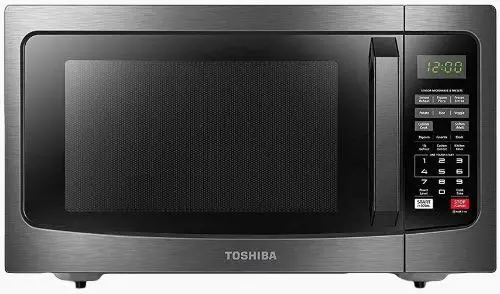
The problem with using electromagnetic waves to penetrate food is that they dry it out. This method is okay for foods with higher liquid content. Fatty foods, cheesy meals, and frozen foods can stand to lose a little moisture and still taste great. But if you’ve ever tried to reheat bread, pizza, or a drier food in the microwave, you know how it can get chewy, or even rock-solid.
Since microwaves penetrate the food to cook it internally, you can’t crisp or toast the outside without overcooking the inside.
Now that we’ve gained an understanding of these two appliances, let’s get into the nitty-gritty arguments for and against them.
Toaster Oven vs. Microwave: Ease of Use
One of the main concerns when it comes to using a toaster oven is that it’s not as intuitive as a microwave. Usually, toaster ovens have dials to turn and different racks for the inside you have to pick between. Whereas microwaves have multiple buttons to choose from that will do the thinking for you. However, toaster oven enthusiasts will tell you that, once you get the hang of it, toaster ovens are more intuitive than microwaves. They give you more control over how your food cooks.
It all comes down to the individual microwave or toaster oven you have. Some have lots of settings and options, and others have less. On the whole, microwaves do come with more preset options. There’s usually a “defrost” button, a “pizza” button, a “popcorn” button, and sometimes a “potato” button. After you select one, the microwave will prompt you to enter information like how many pounds of meat you’re defrosting, or how many slices of pizza you want to heat up. Then it will adjust the power settings and timer accordingly, and voila!
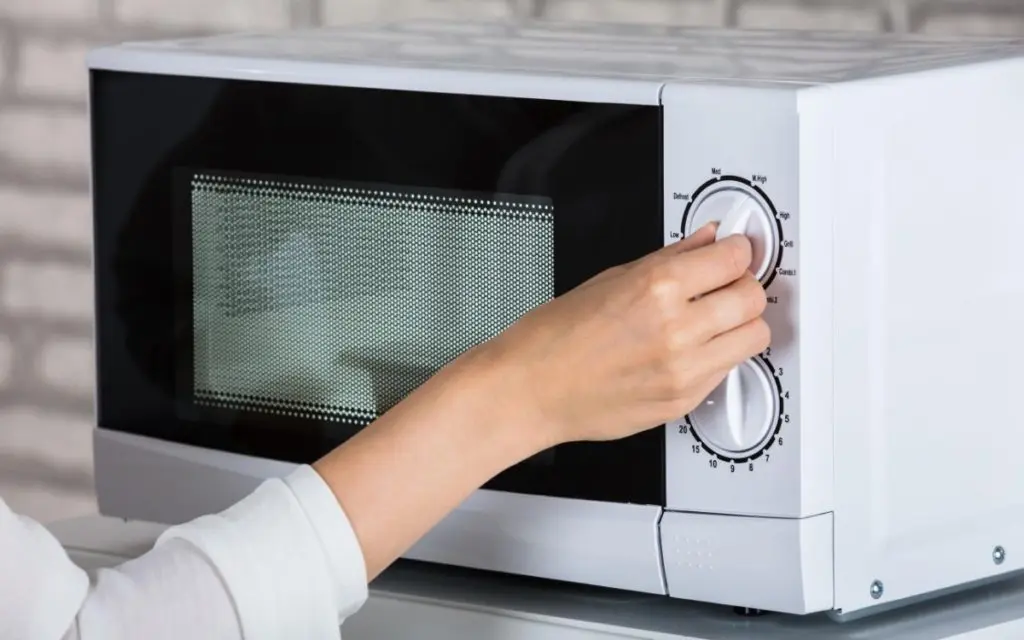
Toaster ovens, on the other hand, require more manual input. Think of it as an actual mini-oven. You can set the temperature, tell it to bake or broil, and set the timer, just like on your oven. Toaster ovens also usually have a “toast” setting, explicitly designed for toasting bread. But you still have to decide what temperature to use, whether you need to bake, toast or broil, and how long to set the timer. This process gives you more control over each setting but means more troubleshooting.
It’s worth noting that microwaves do allow you to adjust the power setting, which is like changing the temperature on a toaster oven. But there are usually only a few power settings to choose from. Often each represents a range of temperatures rather than a specific temperature.
Verdict: While toaster ovens give you more precise control over the cooking process, microwaves are more accessible and intuitive.
Winner: Microwave
Toaster Oven vs. Microwave: Cook Time
Once you’ve got everything set properly, you get to wait for your food to cook. On the whole, microwaves work faster. They heat the food by penetrating each layer with electromagnetic waves. Toaster ovens, on the other hand, heat from the outside-in. You have to wait for that heat to transfer from the outermost layer to the innermost layer.
Verdict: When you’re hungry right this minute, microwaves are definitely faster. If you’ve got some time on your hands, turn to the toaster oven.
Winner: Microwave
Toaster Oven vs. Microwave: Versatility
One of the biggest arguments in the “toaster ovens are best” corner is the full range of foods you can make. You can crisp up some juicy bacon, or get a nice crunch with your garlic cheese bread. You can, of course, make toast, but you can also do things like caramelize onions or brown some hashbrowns.
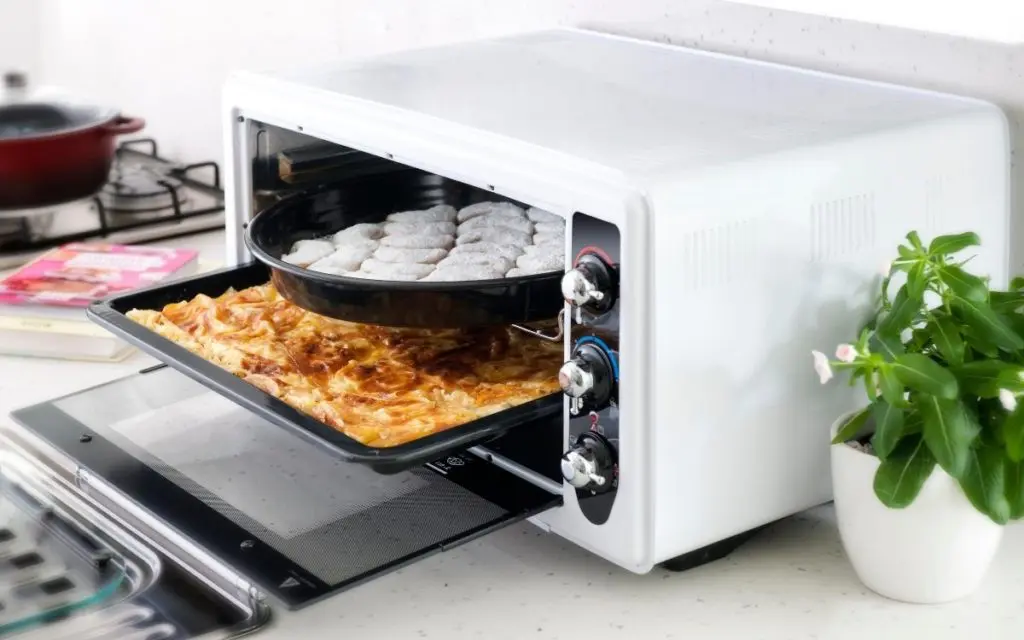
Microwaves can’t do any of that efficiently. If you microwave bacon, your choices are cooked-but-limp or cooked-and-bone-dry (unless you have one of those fancy utensils designed to make good bacon in the microwave). We all know how chewy and hard bread gets in the microwave. Your onions will get all dried up and never caramelize. Your hashbrowns will be piping hot, but certainly nowhere near crispy.
But microwaves can do things like defrosting frozen beef in around fifteen minutes, which would take forever if you tried to do it in the toaster oven. Microwaves can also heat liquids like soups, teas, or sauces quickly and evenly. It’s hard to get a liquid warmed evenly through when the heat is coming from the outside.
Verdict: Microwaves and toaster ovens both have a wide range of capabilities and limitations.
Winner: Tie
Toaster Oven vs. Microwave: Health
Time for our last return to fourth grade — we promise.
One of the biggest arguments against microwaves is their use of electromagnetic waves to heat food, also known as radiation. Radiation is a treatment of cancer and for X-rays, so how can it be okay for it to be in your food?
The answer is twofold.
First, the electromagnetic waves used in microwaves are considered non-ionizing radiation, which is a fancy way of saying that can’t knock electrons out of atoms. This means they can’t damage your DNA or cause cancer, one of the significant concerns anti-microwave advocates have.
Second, when food is absorbing electromagnetic waves, what’s happening is that the water molecules are absorbing those waves in the food. This causes the water molecules to vibrate faster, which converts electromagnetic energy into heat energy. That generated heat is what cooks your food. So no, microwaved food is not at all radioactive or contaminated.
Another concern regarding the health of food cooked in the microwave oven vs. the toaster oven is the belief that the use of electromagnetic waves somehow depletes nutrients from food. According to the FDA, however, it’s actually the opposite. This cooking method actually locks in nutrients (although there is no proof that cooking with a toaster oven loses nutrients).
The final concern regarding the two appliances is less about health and more about welfare. As food in your microwave generates heat itself, no microwave components will get hot. Toaster ovens, on the other hand, use radiated heat. The plate you’re cooking the food on, the door, and the oven walls will be very hot and can burn you. Liquids heated in a microwave can reach boiling quickly and easily. They may boil over and cause severe burns when disturbed.
Basically, the food and/or surrounding surfaces get really, really hot, so be careful!
Verdict: The difference in health benefits and dangers is negligible.
Winner: Tie
Toaster Oven vs. Microwave: Cost
The cost of a toaster oven or microwave depends on a few things: the model, the materials, and the size.
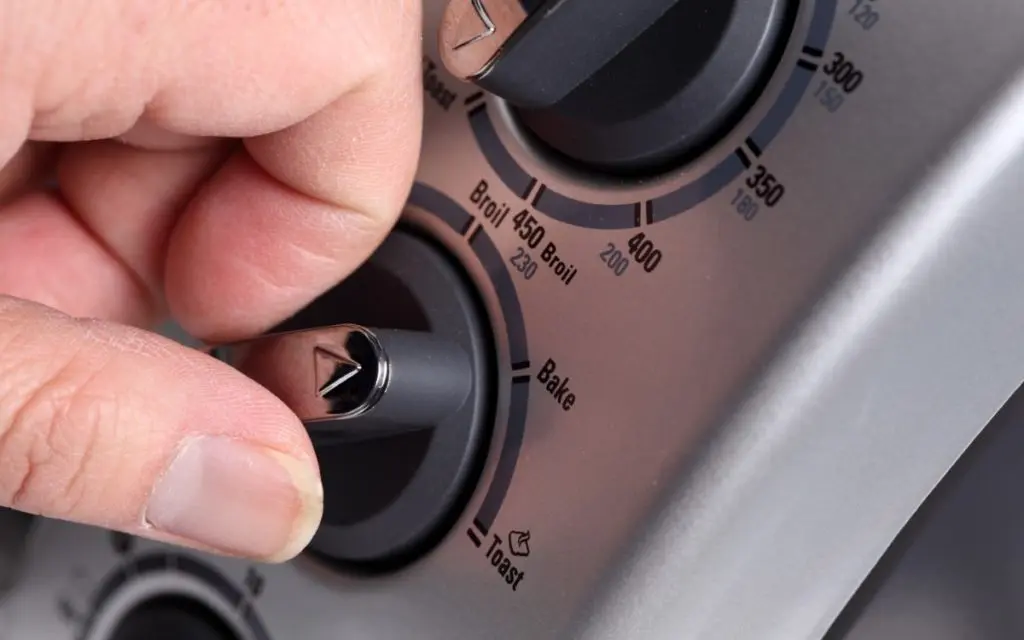
If the toaster oven or microwave comes with a lot of extra settings for specialized cooking, they will cost more. On a microwave, this looks like extra preset options. On a toaster oven, this looks like additional dial settings for specialized cooking methods.
Stainless-steel appliances usually cost more than other materials. And of course, the bigger the unit, the more it costs.
Microwave oven measurements are usually by cubic feet. Toaster ovens come in four-slice and six-slice sizes (referring to how many slices of toast you can cook at a time).
Microwaves range a little higher, from around $50 on the basic end and $300 on the high end. Toaster ovens can range from $30 for a fundamental model but can get up into the $200s for fancier ones. You’ll also want to take into account installation costs. Most microwaves sit as a part of your cabinets above your oven and getting it installed properly takes an expert’s hands.
Verdict: On the whole, microwaves tend to cost a little more than microwaves, and can also include installation fees.
Winner: Toaster Oven
Toaster Oven vs. Microwave Carbon Footprint: Energy Use
While the initial cost is a significant factor in deciding which appliance to purchase, you’ll also want to consider the ongoing operating cost. Both a toaster oven and microwave oven use energy to work, and that energy adds to your power bill each month.
In general, microwaves use about 750 to 1100 watts, while toaster ovens clock between 1200 and 1700.
Microwaves cook food faster, so they use energy for less time than toaster ovens.
In addition to cost concerns, using less energy also reduces the appliance’s carbon footprint, which means it’s better for the environment. While microwaves do have lower energy consumption, remember that toaster ovens are still better than using a full-size oven!
Verdict: Microwaves use less wattage and take less time than toaster ovens.
Winner: Microwave
Which is Best?
So, in the great debate of the microwave vs. the toaster oven, which one wins?
On paper (and according to our categories we ran through), it seems like the microwave comes out on top, but our advice is to take a look at your lifestyle. What do you cook most often? Are you usually crunched for time? Is money a limiting factor?
Despite the debate trying to figure out which is better, members of both sides often recommend having both appliances. This gives you the greatest versatility and control over what and how you cook. So if you have the means, don’t be afraid to add both to your culinary arsenal!
Further Reading
